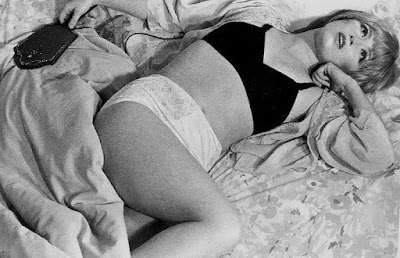In
the early 20th century the emergence of modernism made its arrival,
which was the simplicity of reforming different cultural movements in
architecture, art, music, and literature. The most important impact that shaped
modernism was the industrial societies and rapid growth of cities after the
devastations of WWI. Modernism changed traditional and cultural norms in
society, therefore a new industrialized world produced new innovations of
abstract art and divisionist painting. In the past where women had no ability
to educate themselves or make decisions that would benefit them, this all will
change in the modern era, especially in the early 20th century where
women fight for social and political rights. One of the most significant
political reform movements was the women’s suffrage, which is the right of
women to vote in elections, and let their voices be heard. This period is the
start of women’s role in art and their acknowledgement of pure interest in art
and society. Nevertheless women are constantly discriminated against, because
of gender role and common stereotypes from white male Europeans that believe in
the notion that a female could not exceed a male’s ability or talent. The power
of the male gaze that continues to occur in modernism was predominantly white
males, which always are given more recognition and opportunity. During early 20th
century women are given the opportunity to express their emotions and become
whoever they wish to be, but the lack of resources and constant habit of common
stereotypes resolve in women sticking with what they know and never challenging
themselves to overcome patriarchy.
Very
few female artists during modernism were seen as influential and notice for
their excellence. A key female artist at the age of 22 in 1930 was Lee Krasner,
which she illustrates her self-portrait as early traditional training of
realism. Krasner has strong technical skill with her self-assuredness in the
role of a female artist. Lee Krasner set a foundation of women in art and how
to empower all females to have high standards and to capture their own
reflection for enlightenment. In Chadwick’s text, he asserts, “Krasner and
other women Abstract Expressionists were well aware of the operations of sexual
difference within artistic practice. During the 1940s and 1950s, they
confronted the widely held view that women “couldn’t paint.” Teachers like
Hoffmann, following an example set earlier by Freud’s disciple, Havelock Ellis,
believed that “only men had the wings for art.”” (323). This quote is a prime
example of evidence of the belief that men were superior to women in every
aspect in life, especially in art. The main conclusion of modernism is how the
society was changing into a industrial transition of growth after the first
World War, which gave women a better opportunity in society, but continuingly to
come second to men. In the art world women were making progress and expressing
their talents, but they were always subjected to male dominance and never taken
seriously.
After the WWII modernism was in the
past and the era of postmodernism became the new future for women. This
movement was the characterization of technology and advancement of society,
which developed new use of music, art and literature. Postmodernism questions
the rationality of modernism, because postmodernism wanted to highlight the
manipulation of society. The advancement of technology was prominent during
this time, therefore the undergoing mechanism of advertising and machinery
helped prosper new environmental growth. In the 1970s women were impacted by
the debates of abortion and the international epidemic of AIDS, therefore these
contributed to social and political controversy during this time period. Issues such as
sexuality, gender, ethnicity, and race all shaped female artists in a negative
way, because postmodernism relied heavily on existing representations rather
than inventing new styles. This led people to focus their attention on the ways
sexual and cultural differences were reinforced through images. The way women
were positioned in photographs was critiqued heavily as it depicted patriarchal
power. Throughout the 1960s and 70s, at the end of the modernist period, we saw
the second wave of feminism, which produced the first wave of feminist art. The
sexism seen within the art world, was indicative of a larger, generalized
misogyny, and through liberating and accessible forms of art such as
performance, photography and film, women artists were able to express their
dissatisfaction about gender roles. Cindy Sherman a postmodern female artist
that is known for a series of 69 black and white photographs which were meant
to subvert the stereotypes of women in media films. Her photographs reveal the
instability of gender, and challenge the idea that there might be an innate
female sexuality. She exposes the “real” woman behind the images that Western
culture has already instilled in society through the use of film and
advertising. She positioned herself within an art historical tradition that has
for centuries objected the female body. In Chadwick’s text he illustrates,
“Cindy Sherman’s (1954) photographs reveal the instability of gender, and
challenges the idea that there might be an innate, unmediated female sexuality.
She does this by exposing the fiction of a “real” woman behind the images that
Western culture constructs for our consumption in films and advertising
media”(383). The quote expresses how Cindy Sherman really used her art to challenge
patriarchy and stop the use of women in roles of sexual objects or
stereotypical gender roles. Women artist didn’t challenge the idea of male
privilege over females; the feminist outlook used in art really takes place in
postmodernism.
Work Cited
Chadwick, Whitney. Women,
Art, and Society. Langara College, 2016

No comments:
Post a Comment